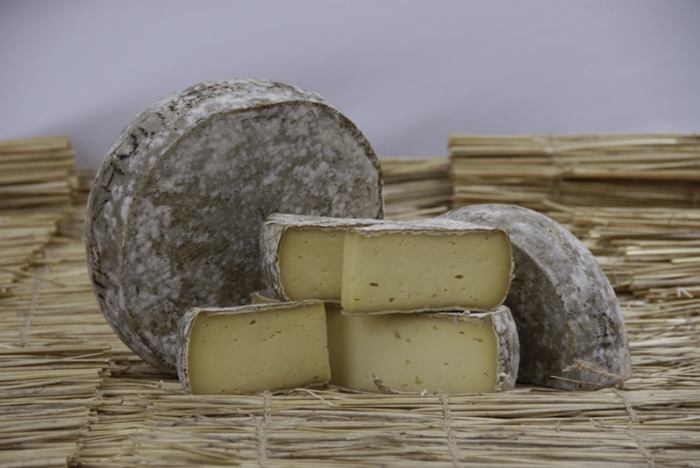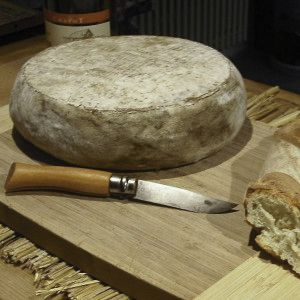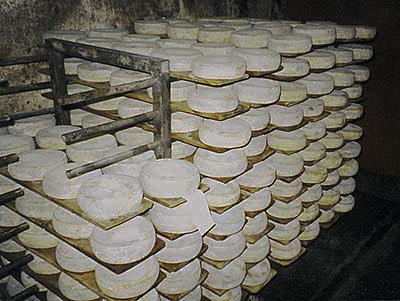Tomme Style Cheese Info
A Tomme Style Cheese from the Alps
This recipe is based on one of the great cheeses produced in the Alps. The Tomme is a cheese that is made when there is either a good supply of milk, or sometimes as a lower butterfat cheese, when the fat has been skimmed for butter or for other uses.
To me, this cheese visually represents a wonderful sense of the mountains from where it originates. It has such a rustic appearance with it's natural rind made up of an assorted group of molds that are just allowed to grow wild.
A Bit of History
The name for this cheese is usually prefixed with "Tomme de ..." and followed by the name of a region such as Bauges, Savoie, Crayeuse, Montagne, or some other regional name to indicate it's origin. The word Tomme actually refers to a smallish flat wheel of cheese, usually developing a rather rustic coat.
The name also moves across the mountains to Italy where it takes on the name "Toma ..." and is again followed by a regional designation such as Toma Piemontese (small cheese made in the Piedmont region of Italy) or Toma di Gressoney, named from the valley where it is made.
Although the Tommes may be somewhat diverse in regional production, they all seem to have several factors in common:
- The milk is lower fat than normal - 2-2.5% butterfat.
- The temperature is usually held at 86-96F and rarely cooked beyond it's initial coagulation temperature.
- The rennet is usually added earlier in the process for a coagulation of a less acid milk. This does show in it's texture.
- They are usually finished with a rustic natural rind made up of mold that naturally develops in the region of production.
- Tommes are usually ready for the table in about 60 days.
As you can see here, this is a very user friendly cheese to make on the small farm, or in the kitchen, because of its simple and "unfussy" process of both making and aging. In my eyes, it is the quintessential "farmstead cheese," perfect for the farm or home cheese maker who has so many other things to do in their day. This should become more clear as we work our way through the make guidelines below.
A Specific Style
Tomme de Savoie is the specific cheese I am making for this months recipe page. In the Savoie area of eastern France, bordering the Swiss-Italian border where I have learned to make this particular style (Tomme de Savoie), the dominant source of milk is the Abondance breed (pic below) with perhaps some Tarine/Tarentaise mixed in. Both are very hearty breeds that do well with this mountain climate and geography
This is a cheese which is often made with Reblochon in that region. You can still find it produced on family farms, as well as in larger co-operatives (Fruitière). The fresh cheese quickly develops a short hair-like mold (yes, Mucor!) and this gradually settles down into a very rustic brown-grey crust. The cheese body is also quite open and evolves from a firm to softer interior as the texture and flavor matures.
When made in the mountain farms (Fermier), the cheese is made and aged in it's own underground cave with milk from their own herds. This is usually sold directly from the farmhouse door.
Over the years, I have narrowed my choice down to one farm in the Aravis region of Savoie, where I usually buy my cheese.
This cheese can also be made at co-operatives, which are called "Fruitières" in France, where very high quality milk is collected from a local area and made into cheese by a very well trained and efficient group of cheese makers. Quite often these co-operatives are owned by the farmers themselves.
Both of these cheeses can be quite good, but the Fermier style is a bit closer to the Hand and the Land. Unfortunately, they do not usually make it into the retail chain in America.




































